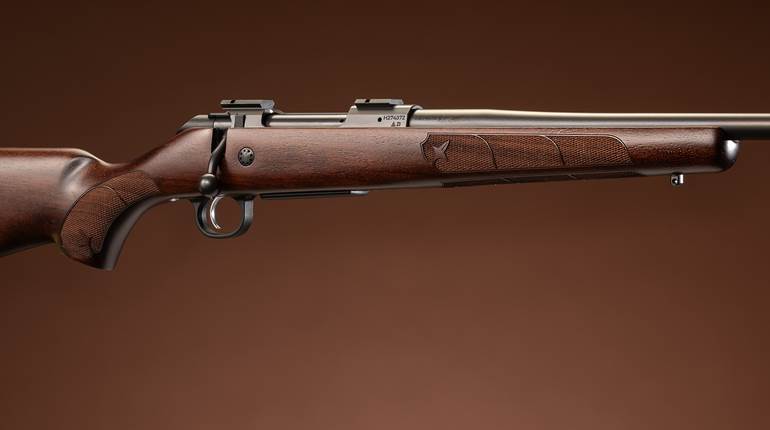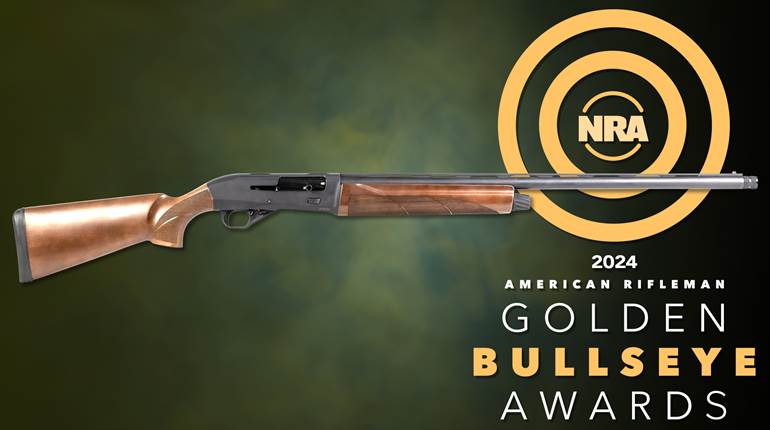
We recently gave away a pistol bayonet from LaserLyte as a prize for our "Snap Shots" caption contest. This, of course raised some questions about pistol bayonets. Coincidently, NRA's National Firearms Museum received-on loan-an original Elgin Cutlass pistol as well as a wheel-lock pistol with an axe blade. A pretty wicked looking one, too.
The concept of putting a blade on a handgun is not new. Early in the development of firearms, it was not necessarily clear which was the superior defensive arm, the wheel-lock single-shot pistol or the sword. Or in the all-steel example shown here, axes. The earliest hand firearms combined with blades in the 16th century would be more rightly swords or daggers with guns attached, but these were permanently affixed. For long guns, adding a blade to a musket converted it into a pike. The bayonet, in plug form, itself wasn’t recorded until 1571 according to Rodolphe Schmidt’s Les Arms a Feu Portatives. Schmidt dates the detachable bayonet to 1641-42.
In handguns, the English maker John Waters of Birmingham was granted a patent in 1781 for “Pistols with a Bayonet” for single-shot flintlock pistols and they could be “connected by a spring, slide, hinge or otherwise.” Commonly the blade was hinged at the front and then swung forward upon being released, much like a Chinese SKS bayonet. These were generally pocket guns carried with the spike folded until needed. The efficacy of the single-shot pistol was theoretically enhanced by the inclusion of such a device.
George Elgin gets the credit for the first major American handgun/blade device patented in 1837 for “a new and useful instrument called the Pistol-Knife or Pistol-Cutlass,” and it emerged during the young nation’s fascination of Bowie knives. The single-shot Elgin Cutlass Pistol was made by Morrill, Mosman and Blair of Amherst, Mass., and by C.B. Allen of Springfield, Mass. The latter is said to have used blades fabricated by another famous Massachusetts firm, the Ames Mfg. Co. The U.S. Navy procured 150 of the .54 cal. single-shot version with 11” blades for South Sea Exploring Expedition. This was, interestingly, the first U.S. issue percussion handgun. Colt, too, dabbled with the idea of a cutlass revolver, reportedly in 1836-the same year Samuel Colt received his revolving cylinder patent-with a knuckle guard, straight blade, and interestingly, a bobbed hammer and double-action mechanism. In Lewis Wainant’s Firearms Curiosa, a photo depicts renowned collector Charles Noe Daly wearing a cuirass with 19 pistols and holding what appears to be a pinfire of the Lefacheaux pattern, again with a wicked-looking Bowie-style blade.
The pistol bayonet had a rebirth in the trenches the World War I with the Webley-Pritchard bayonet attachment fitted to the Webley Mk VI revolver, often in concert with a detachable shoulder stock (remember the mace even made a comeback in the close quarters of the trenches). The triangular Webley-Pritchard, fashioned from cut-down French Gras bayonets, was made by W.W. Greener and slid over the front of the revolver. International Military Antiques has been offering reproductions with the scabbard and frog, and its reproduction has far outstripped the original manufacture run.
As rapidity of loading increased the effectiveness of the handgun sans bayonet, such devices fell into the seldom seen novelty category. The introduction of a standardized Picatinny open rail on the front dustcover of many of today’s handguns opened the door for all manner of accessories to be mounted, primarily lights and lasers, but it also facilitated the addition of an under-barrel bayonet.
In 2005 Ceska Zbrovka (CZ) reintroduced the concept on the CZ-75 based Model 01 handgun. According to CZ USA’s Jason Morton, the blade was an afterthought. The concept was to mount an impact device for glass breakage and to allow the pistol to operate with muzzle contact (depressing the slide front moves the pistol out of battery) on a surface, organic or otherwise. It took the form of an underside rail with a false muzzle that could attach to the dustcover. When the concept was sent to the firm’s engineers in the Czech Republic, they added a removable blade.
In more recent years, Laserlyte updated the concept with a pistol bayonet that feature a 2¾” Ka-Bar serrated blade mounted in a nylon-reinforced polymer handle that makes the “instrument” look like a modern military bayonet in miniature. Retention is via two latches at the top rear. More recently, Laserlyte has added the Mini Tac Tool that has a squared, serrated and beveled blade that has a web cutter on its top surface.
The ability to rapidly reload modern handguns has greatly diminished whatever practicality existed for such device in close combat. Several accomplished defensive trainers suggested a fixed bladed knife is preferable to an unloaded pistol with a bayonet affixed. Regardless of their utility in a close-quarters situation (a fixed bladed knife would likely be more useful), they are undoubtably interesting.





































